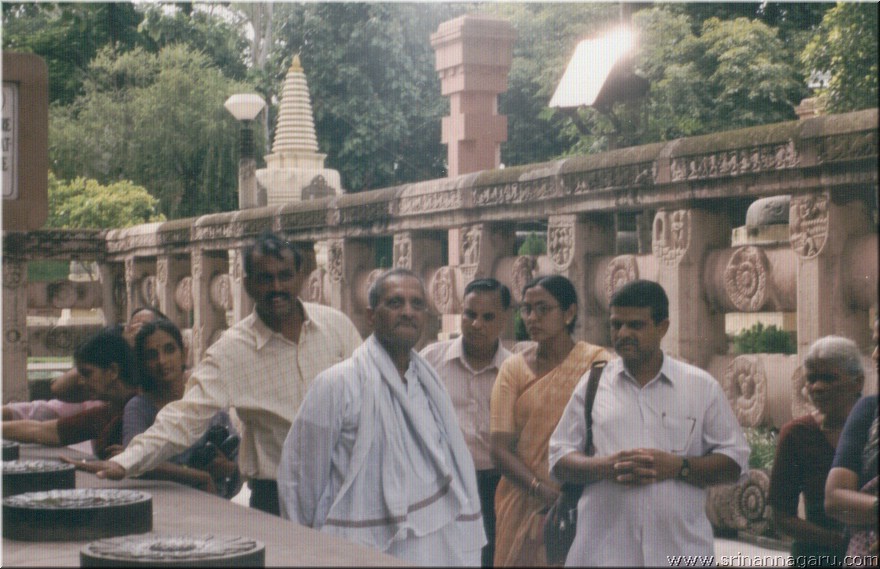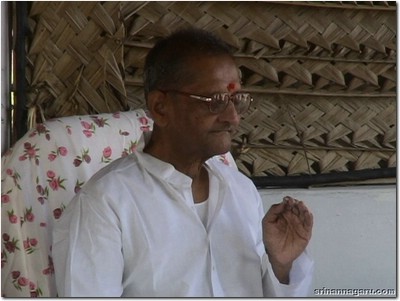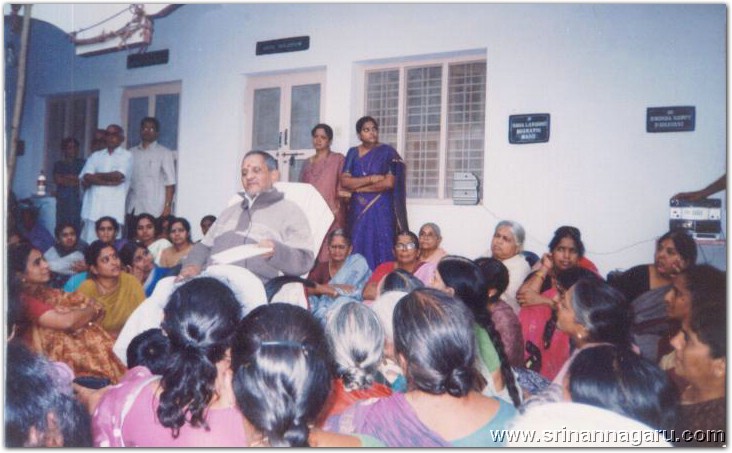Since my boy-hood I had a spiritual bent of mind and used to worship Lord Krishna.
When I was 22 years old, my beloved father who was a great devotee of Lord Shiva, left his mortal coil. I had to shoulder a greater responsibility of the entire family. I was pulling on my life afflicted by the tyrannies of my mind. Days were rolling on with the friction of ups and downs. Later eighties I saw a book in my friends hand which contained a photograph of Bhagawan Sri Ramana Maharshi on its cover page. It held my attention as a nail held by a magnet. That incident changed the course of my life and my approach to spirituality. It opened the gateway to my entrance into Bhagawan Sri Ramana Maharshis spiritual circle and his teachings. By his Grace I visited Sri Ramana ashram for the first time in June 1990, and stayed there. I cannot express my experience in words, it was like homecoming. I was a regular visitor to Ramana ashram 1990 onwards, and so far I visited the Ashram forty times.
Sri Nannagaru entrance into my life
The year 1990 was remarkable in my life. The exact date I don’t remember in November 1990. I happened to meet Sri Nannagaru for the first time in Eduru, a village in W.G.District of Andhra Pradesh. It was 12 noon on that day Sri Nannagaru received me with warmth, hospitality and affection. He discussed about my spiritual path and also about my personal life for half-an-hour in a face to face conversation. He blessed me with the words “You should realize the truth in this birth only”. I was awed by his solemn words. His words delve deep into my heart. I knew I have found my master and Guru. Thereafter my zeal to see Nannagaru and seek his blessings increased. The more I visited him the more was the attraction. I used to attend the spiritual discourses of Nannagaru and could share the waves of bliss frequently. Sadguru subjected me to a testing period for four years from November 1990 to November 1994 to confirm my mental fitness. Then I could realize what real spirituality is! His power and Grace became integral to my life then and thereafter. I was attracted to him as a kind of gravitational force which I could not resist. Each passing day brought me to the saint of Jinnuru more and more. Till today I am always ready and eager to see him. I cannot forget the memorable first visit paid by Sadguru Sri Nannagaru to my residence at Mukteswaram during November 1994.
About my Master Sadguru Sri Nannagaru
Bhagawan Sri Ramana Maharshi in the year 1957 entered into the life of Nannagaru, selected him and blessed him. He is a living testimony of Bhagawan Ramana Maharshis gospel. He is a guide to seekers of enlightenment. Those afflicted by worldly suffering and others seeking guidance on the right spiritual path to realize one’s real nature which is eternal, Infinite existence, knowledge and bliss Sadguru Sri Nannagaru is ever ready to guide with the nectar of Bhagawan Ramana Maharshis gospel. He advocates Realization of one’s True nature is the aim and purpose of this human life. He speaks to the aspirants in the hearts language. He is a practical spiritualist. His emphasis has always been on practise and more practise. He awakes aspirants to the Ultimate reality by his words, deeds, way of living and preaching. His way of living is his teaching. He is an epitome of peace, non-doer ship and sweetness of disposition. He is very accessible and has compassion for suffering humanity. He teaches the gospel of Bhagawan Ramana in the simplest, more practical and scientific way.
The proximity of Sadguru Sri Nannagaru kindles our desire for the ultimate goal which is self realization. He tours to quench the spiritual thirst of devotees and often visits Arunachalam (Tiruvannamalai). His valuable discourses at different places are being published by Telugu monthly magazine “Ramana Bhaskara”. Devotees gather round hi with attention and devotion to grasp the pearls of wisdom dropped from his mouth. He teaches different facets of Bhagawan Ramana's teaching keeping in view ground realities and difficulties we come across. He advocates the need of inner life and asserts – “If you want to realize the truth you must deepen your mind into your heart “You are that”, so learn to know your ‘Real Nature’. A Guru is not a person but ultimate reality itself. His primary focus is on inner transformation.
My respect to Sri Nannagaru is extra ordinary. He is my eternal companion and a boon to my life. He opened the doorway to true life. His proactive compassion is indebted. The above written expression is only introductory but the sacred memories of my Master are rich in content. The seed of Ramana Satsang sowed by Sadguru Sri Nannagaru in Amalapuram, in the year 1998, has now grown up to a tree of thirteen years old.



